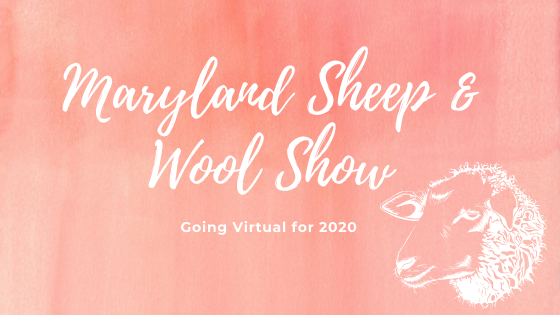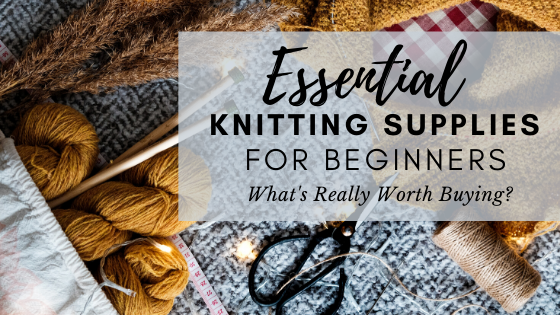You picked out the perfect pattern to start your knitting journey. You found a luscious yarn you can’t wait to get your hands into. Now, it's time for the third essential ingredient: needles. The wrong needles will not only slow you down (considerably), but they can make or break your knitting joy.
But there are so many different types of needles out there varying by material, size, price, and shape. (There are even square ones!) So, what exactly are the best knitting needles for beginners...or even very experienced knitters?
Knitting is a tactile pursuit. And at Bare Naked Wools, we believe the feel of the needles is just as important as the yarn. Poor needles catch yarn, splinter or even break. There are cheap sets out there that won’t last through one project! But what works for one knitter may not work for another. So, let’s give a breakdown so you can find the perfect match.
Are Wood, Metal or Plastic Knitting Needles Better?
The first thing to consider is what material you want your knitting needles to be made from. There are some advantages and disadvantages to each type. The three main categories of knitting needles are synthetic, wood and metal.
Plastic and Acrylic
In the synthetic category, there are plastic and acrylic. These are lightweight, conveniently available in big-box craft stores and the most inexpensive option. Plus they come in fun colors. With minimal friction and blunter points, these work best for chunkier yarns.
Pros:
- Budget-friendly
Cons:
- Easily breakable
- More flex than other materials (not something you want in your needles!)
- Yarn can 'stick' to some of the brands or snag on nicks
- Dull, blunt tips can prevent accuracy
- Not as nice of a hand-feel as other materials
Birch, Bamboo and More
The most common material in the wood category is bamboo, but there are also beautiful birch, walnut and other smooth-grained woods available. Bamboo, a very hard and durable material, is the most versatile for all different types of yarn and resists splinters and breakage. Stitches slide beautifully along the needles (although not usually as easily as metal) and the points are just right for picking up anything from lace to bulky weight yarn.
Even the sturdiest wooden needles though aren’t as durable as metal. Points may dull a little over time...And for those of you with canine companions, you may find your furry friend thinks you brought home a new toy!
Pros:
- Can be very attractive
- Nice feel
Cons:
- Still more fragile than metal (some dogs and cats love using them as chew toys)
- Tips are blunter than some of the higher-end steel needles
- Tips can dull over time
- Polish can wear off the needles
- Yarn does not glide as easily as it does on metal needles
Aluminum and Steel
The slippery surface of metal needles makes it an excellent choice for synthetic, fluffy or eyelash yarns. It also tends to be the choice of experienced knitters who like optimal speed. Commonly made of lightweight aluminum or stainless steel, beginners may want to opt for ones with brushed metal surfaces so there is some grip for your yarn.
We also suggest that you choose needles that contrast with your yarn for easy use. Coated aluminum needles give you a rainbow of options.
Steel is the higher quality and usually more expensive choice of the two. These needles tend to last a lifetime, so they can make a good investment.
Note that for color-coated needles, the body chemistry of some knitters can cause the surface paint to wear away over time creating rough spots. This is only a problem for a small percentage though and usually results after long-term use.
Pros:
- Most durable (and least attractive to curious pets)
- Sharpest tips for precision knitting (varies by brand)
- Tips won't dull
- Yarn glides smoothly and speedily off the tips
Cons:
- Can be the most expensive of the options
- Be wary of colored aluminum coatings that can wear off over time and become rough, catching yarn. (Uncoated steel is best).
Types of Knitting Needles: DPN, Straight or Circular
The next thing to consider is the type of needles you want to use. There are double-pointed needles, straight needles, and circular needles.
Double-pointed needles (dpns) are used in sets of five for projects that require knitting in the round, like socks. Since you are not likely to take on this level of difficulty as a beginner, you won’t be needing those just yet.
Single-pointed straight needles come in a pair with a knob or disc at one end to stop the yarn from sliding off. Straight needles can be a great option for beginner knitters and work well for simple scarves or anything that is worked flat and not too wide.
But we can let you in on a great secret…Circular needles can do anything straight needles can, plus more!
Circular needles can be used for both flat and in-the-round projects. You can knit on public transportation without poking the person next to you. Because they roll up, your project can be tucked into your purse to go anywhere with you. Circular needles can be bought in individual sizes or you can invest in a kit of interchangeable needles with different sized cables and tips.
Our general recommendation here is to go with circulars.
Best Needle Size for Beginner Knitters
Needle sizes are the final thing to consider. Each knitting pattern has a recommended needle size and each yarn has a range of needle sizes that work optimally with it. The sizes range from US 1 (2.25mm) to US 50 (25mm).
We recommend that beginning knitters focus on projects that use the mid-range sizes (US 7-10) for ease and workability. However, projects with large needles and bulky yarns knit up quickly and bring instant gratification, so if you can’t wait to work with super-bulky yarn, go for it!
Your pattern will suggest the right weight yarn and needle size. The pattern recommendation takes precedence, but if you are purchasing your yarn before finding a pattern (not recommended), the suggested needle size will be right on the yarn label. As you learn whether you’re a tight or loose knitter, you’ll adjust the recommended needle size up or down.
Our VERY Favorite Knitting Needles
Since the right needles can literally make or break your enjoyment of knitting, we recommend going with the highest quality you can, that’s why we choose to offer ChiaoGoo Circular Knitting Needles.
You’ll hear about other good brands mentioned on forums like Knitter’s Pride and Knit Picks, but ChiaoGoo Red Lace circulars are overwhelmingly the top choice of knitters. Their lightweight feel, super fine points for picking up stitches and speedy smoothness are a delight to knit with. Even the cable connecting the needles is a top-notch nylon coated steel wire with no-memory (important for both longevity and not feeling like you’re in a wrestling match with your own needles).
We start our beginners with Chiaogoo size 7, 16” stainless steel “Red Lace” circulars which are currently available for $10 + shipping.You can certainly find them other places online though, including Amazon, for around the same price.
This particular size allows you to knit a wide range of beginner-friendly projects from dishcloths to hats and scarves. (To find some great patterns, use the advanced search feature on Ravelry to filter by needle size and pattern difficulty).
Or take a look at the entire range of Chiagoo Knitting Needles that we have available.
If you LOVE your first pair, and we think you will, you may want to consider investing in the interchangeable "Twist" set or half set.
We hope this information gives you a head start in choosing the right needles for you. You may have to play Goldilocks and try out each one to find what feels right for you. Ask your local knitting shop if they have some samples you can try.
Time to get your needles clicking!





1 comment
Ann Marie
I really appreciate this article that’s packed with great information. I had tried knitting sometime back and was doing great until I made a mistake. I thought I could undo it like in crocheting and messed it up. The needles I was using was cheap and horrible. I’m going to check out the recommendations provided in this article.
Again, thank you so much!
I really appreciate this article that’s packed with great information. I had tried knitting sometime back and was doing great until I made a mistake. I thought I could undo it like in crocheting and messed it up. The needles I was using was cheap and horrible. I’m going to check out the recommendations provided in this article.
Again, thank you so much!